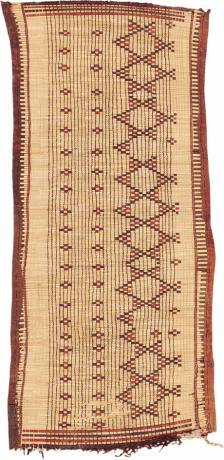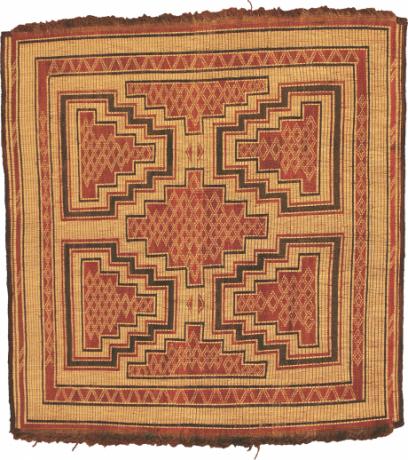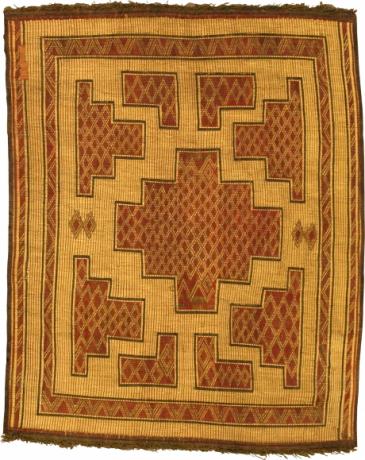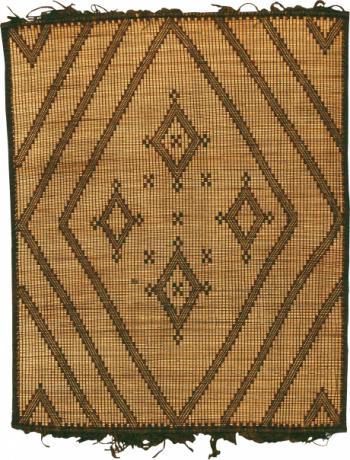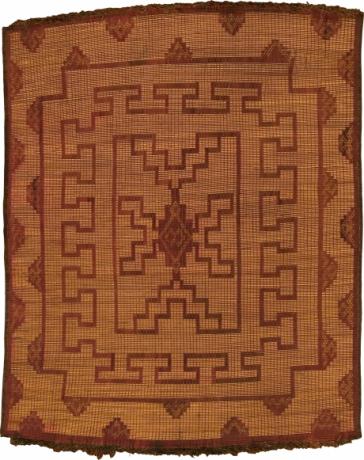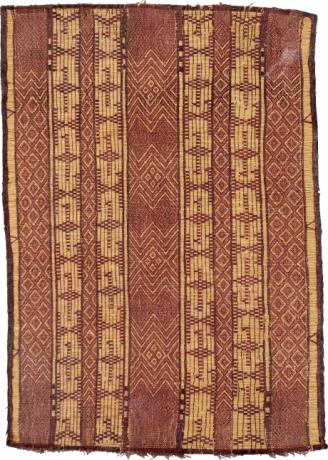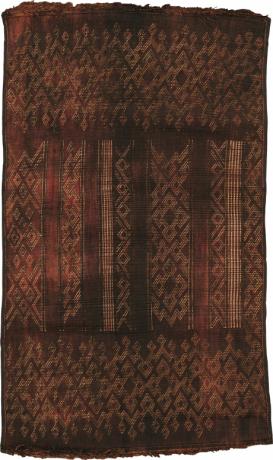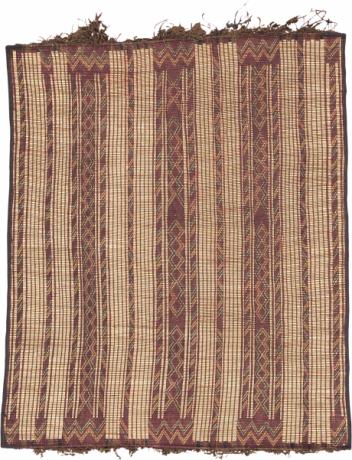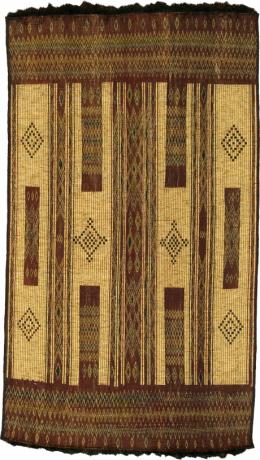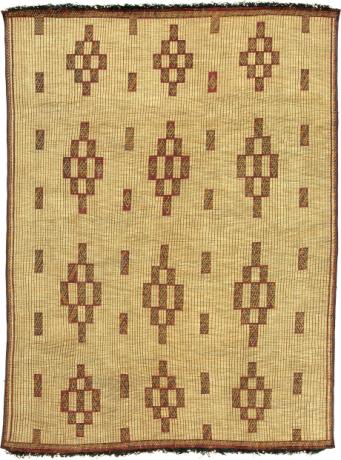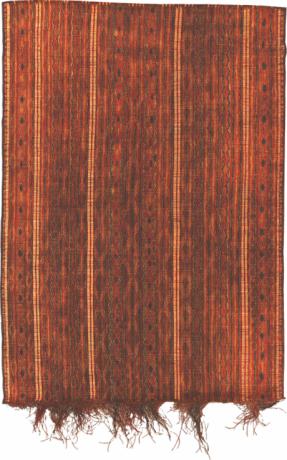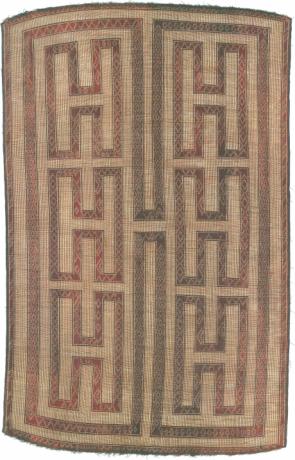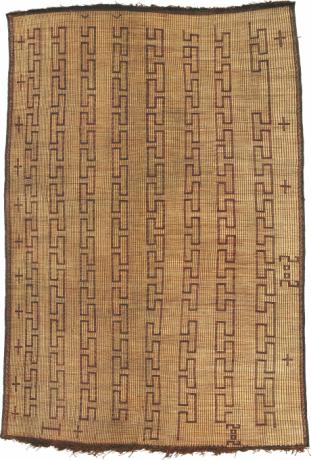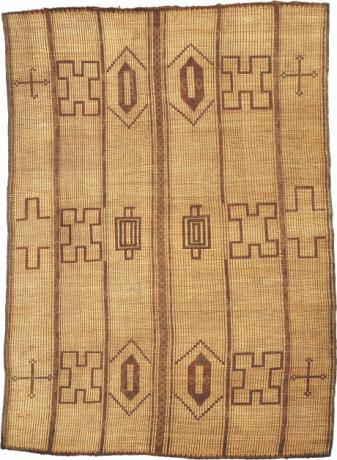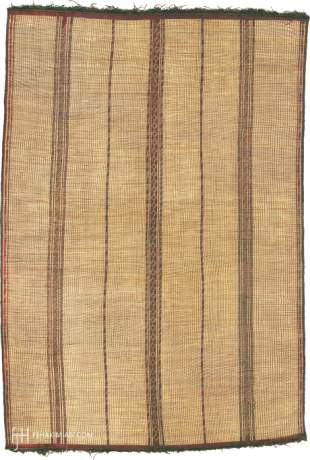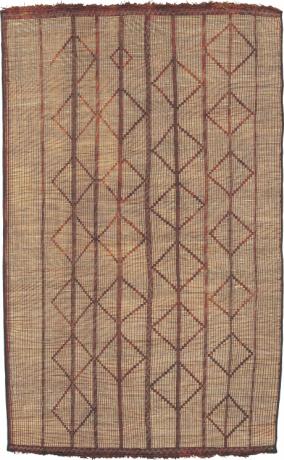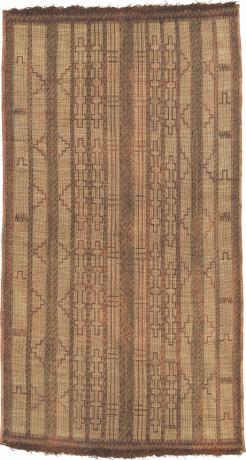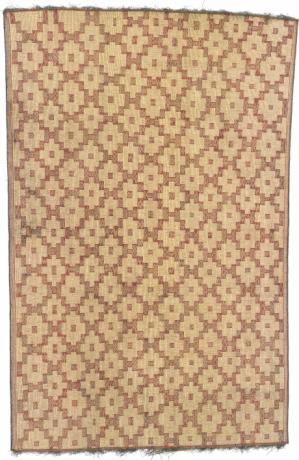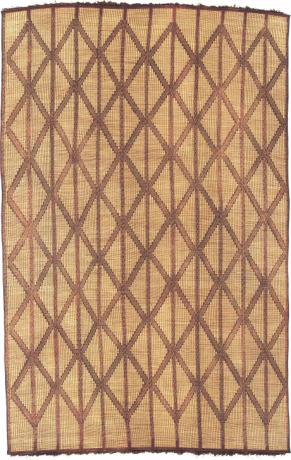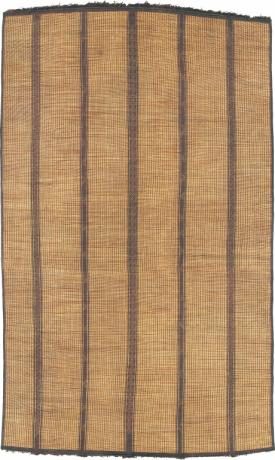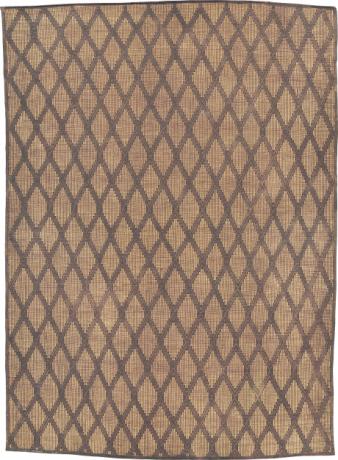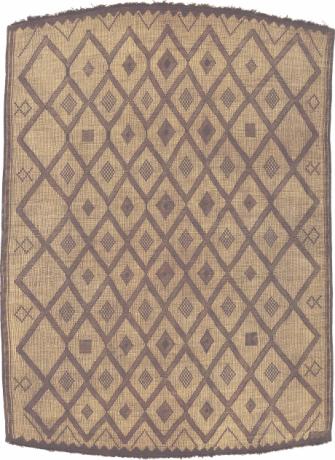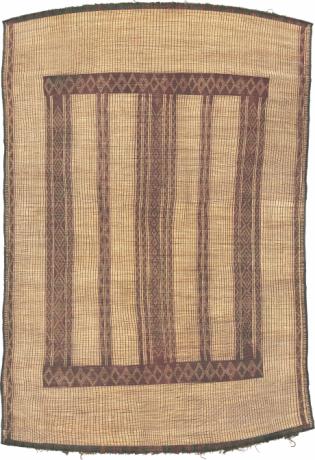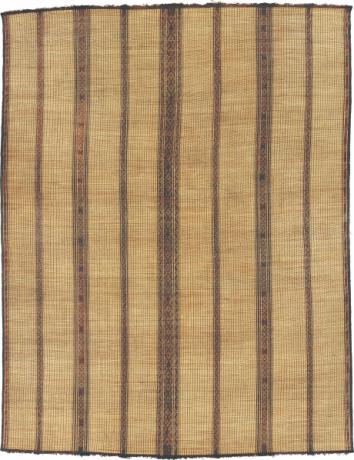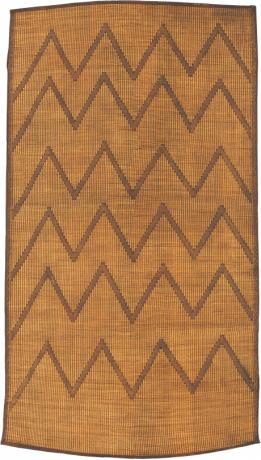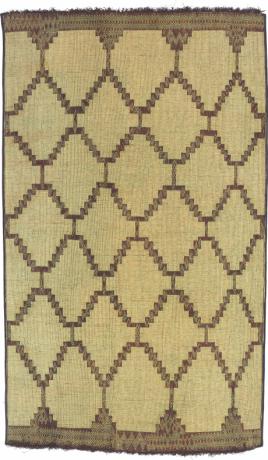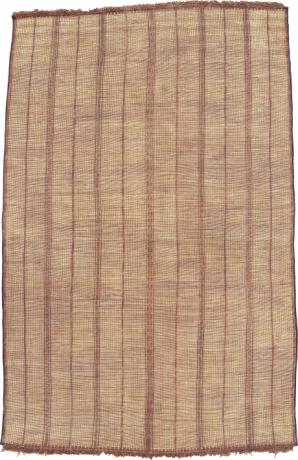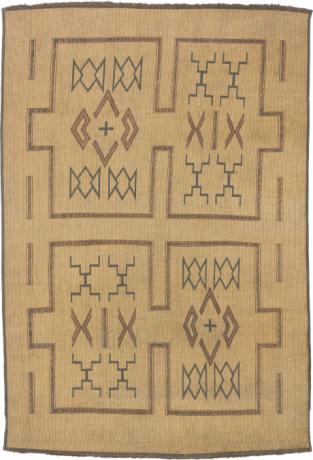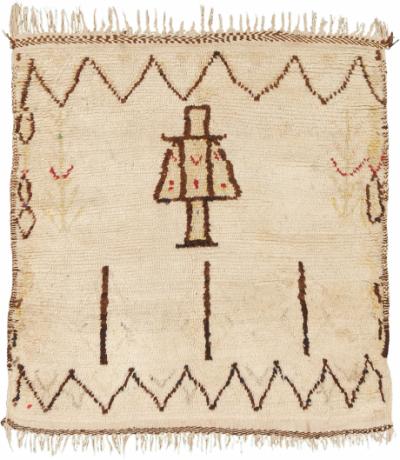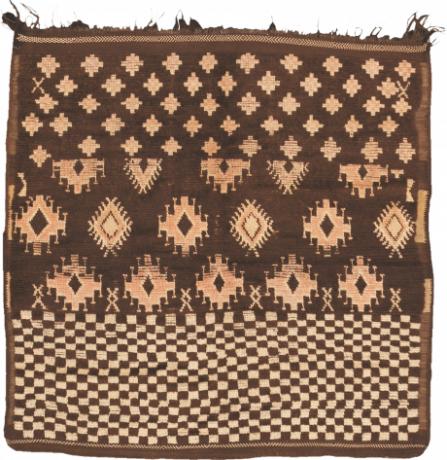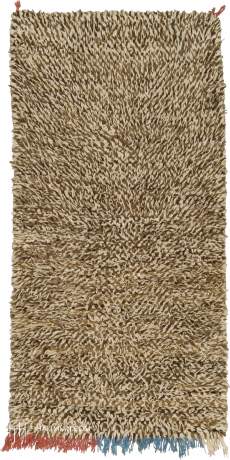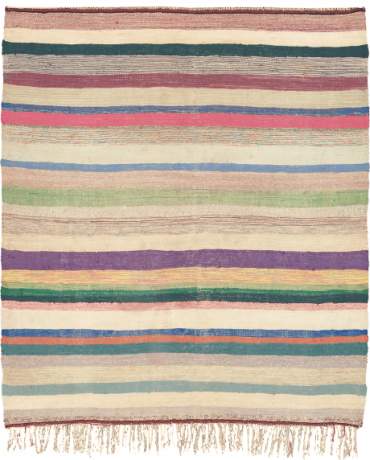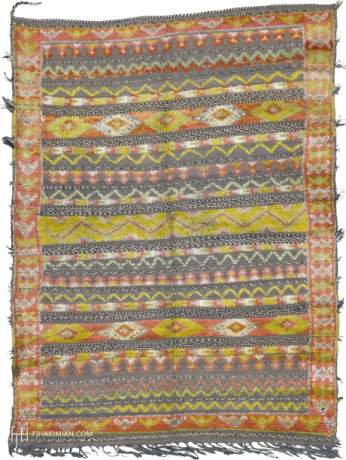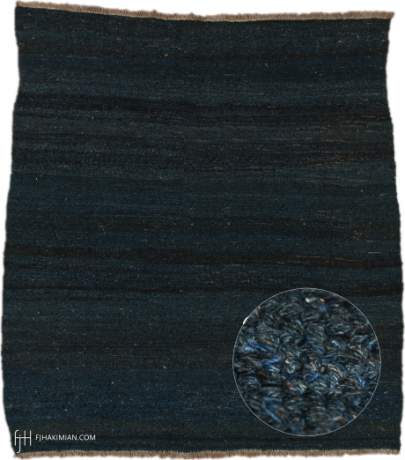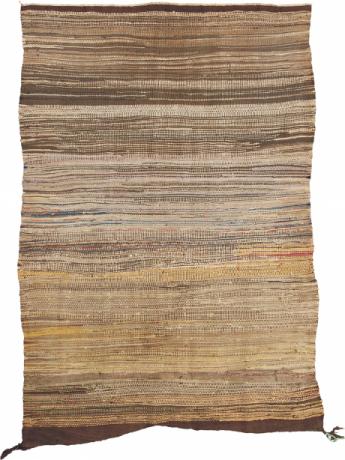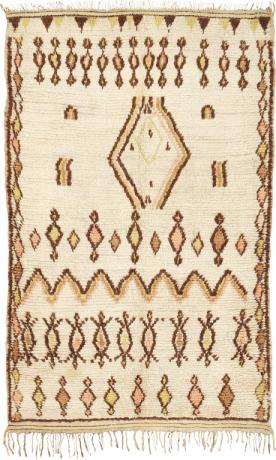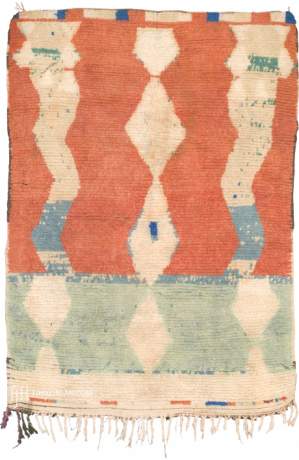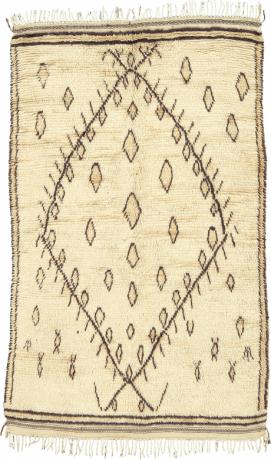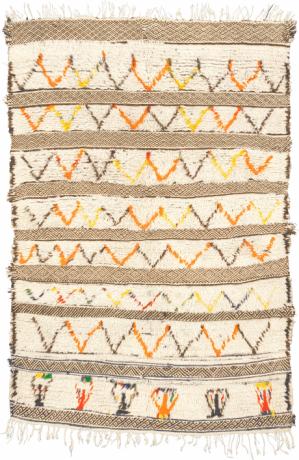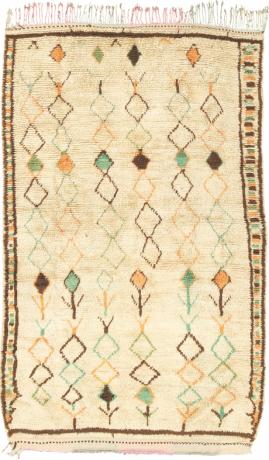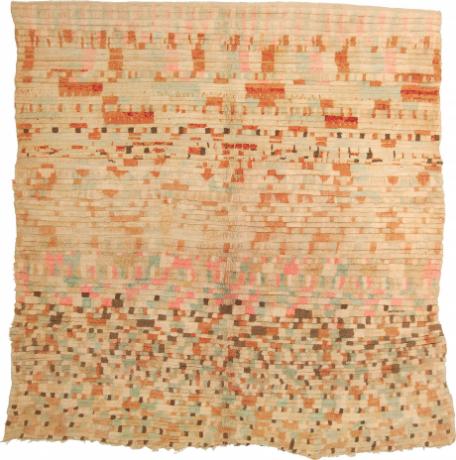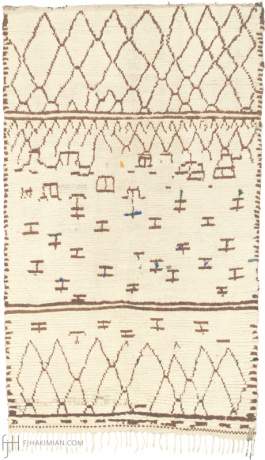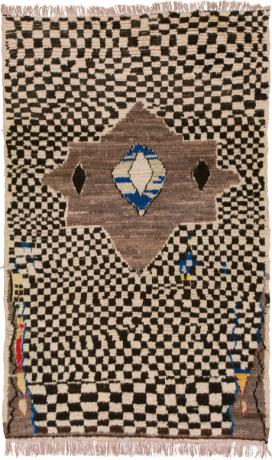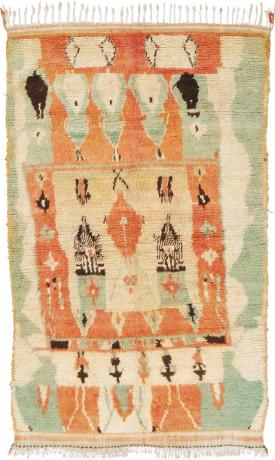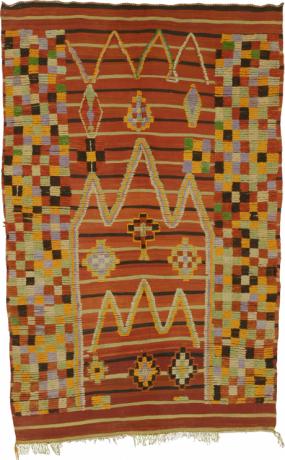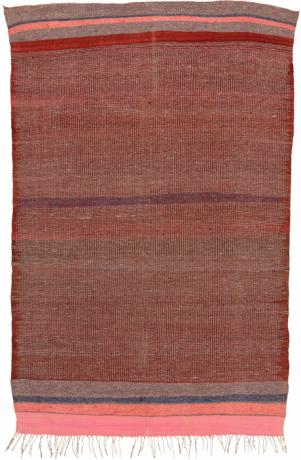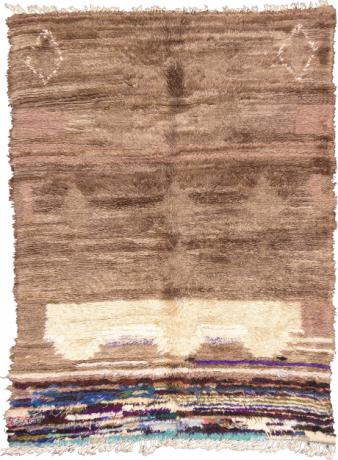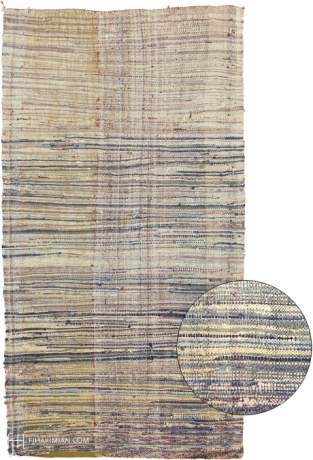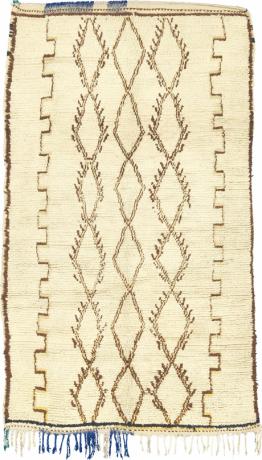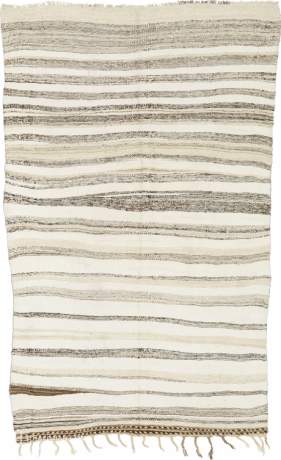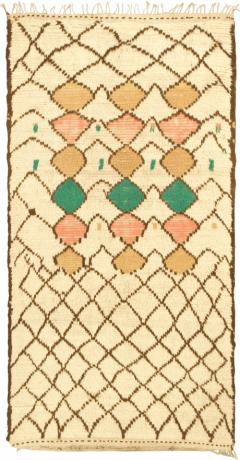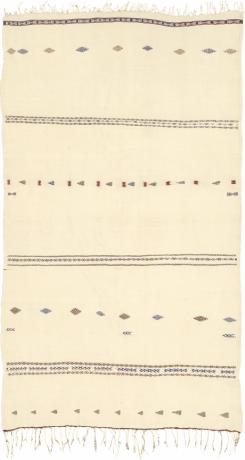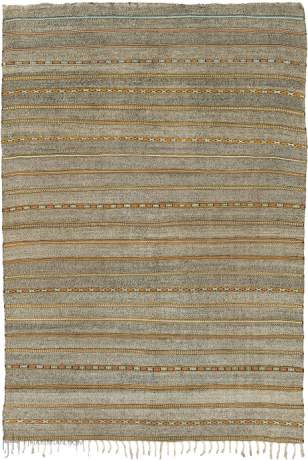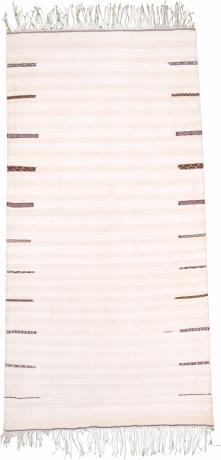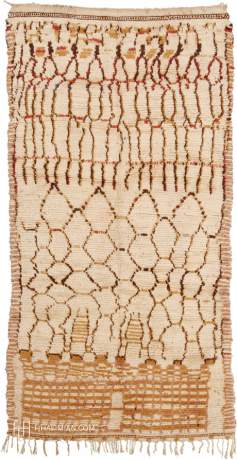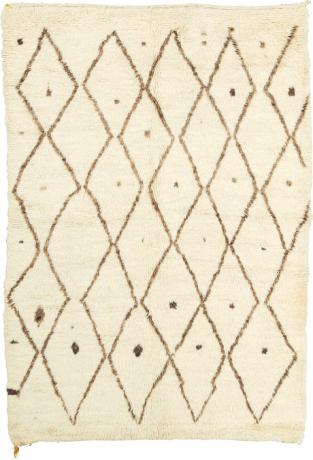A smaller sect of the Berber people who predominantly inhabit Northern African nations, the Tuaregs share common cultural aspects with the Berbers in their way of life. As their economy revolved around trans-Saharan trade, this created a significant impact on their art, including textiles.
Made in the first years of the 20th century, mats produced from the nomadic tribes had a significant place in Tuareg culture and have been hand-woven by women for thousands of years. The women who hand-wove these Tuareg mats used convenient materials such as palms and reeds. Once completing the base, they would then decorate them with intricate leather strands of camel or goat leather often adorned with powerful symbols. Due to the size and incredible durability, these mats were made to withstand some of the hottest temperatures worldwide. More…
A smaller sect of the Berber people who predominantly inhabit Northern African nations, the Tuaregs share common cultural aspects with the Berbers in their way of life. As their economy revolved around trans-Saharan trade, this created a significant impact on their art, including textiles.
Made in the first years of the 20th century, mats produced from the nomadic tribes had a significant place in Tuareg culture and have been hand-woven by women for thousands of years. The women who hand-wove these Tuareg mats used convenient materials such as palms and reeds. Once completing the base, they would then decorate them with intricate leather strands of camel or goat leather often adorned with powerful symbols. Due to the size and incredible durability, these mats were made to withstand some of the hottest temperatures worldwide.
Our extensive collection at FJ Hakimian Gallery provides Tuareg mats in a number of sizes with a range of warm, earthly tones sure to illuminate any room in your home. Using the stark elegance of these mats woven by women of the African desert, any interior decor fashioned with these pieces surely transforms any modern day living space.
No carpets matched.

